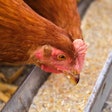A shift away from the pig market and toward cattle sectors is becoming a notable trend within Ireland's feed industry.
The overall volume of production from Irish feedmills is now around 3.5 million tons per year. By comparison, in the early 1990s it was only about 3 million metric tons. However, virtually all of that increase can be traced to a recent rise in the output of cattle feeds. Manufacturing of diets for poultry has remained mostly constant over recent years, whereas a smaller amount of pig feeds is now being produced.
Evidence for the shift is presented in Table 1. This has been extracted from a 2008 report published in Ireland, "A Development Strategy for the Irish Pig Industry, 2008 to 2015." The report was prepared as a discussion document by the pig production development unit of the Irish agrifood research and development agency Teagasc.
The country's pork production sector consists of about 1.7 million pigs, found primarily on 440 commercial units. The activities of these pig producers make use of approximately 925,000 metric tons, according to estimates based on producing 21 pigs per sow per year on average calculated on 155,000 sows and taking the progeny to a 90 kg liveweight at slaughter, with a liveweight feed conversion ratio of 2.46 for the period from weaning to finish.
Shift away from industrial mills
However, the feed industry's own figures demonstrate that Ireland's pig units use no more than 600,000 tons of industrially manufactured compounds per year. So the report suggests not only that pig diets in Ireland now represent less than 20 percent of all commercially manufactured animal feed nationwide, but also that the industrial mills meet under two-thirds of the pig sector's annual feed requirements.
The growing competitor to the mill operators is on-farm feed mixing (Table 2). At approximately 325,000 tons of pig feeds per year, the current level of this side of the business points to a growth in farm feed production of 134,000 tons since 2001. In other words, there appears to have been a 73 percent rise over the past six years. Home-produced rations are now reckoned to account for almost 35 percent of all the feed made for pigs in Ireland.
The big upsurge is attributed partly to an increased number of pig farms opting to make their own feeds and partly to an expansion in the herd size of those already utilizing on-farm mixers. On larger pig units in Ireland, it has been driven principally by the availability of advantageous manufacturing tax rates.
Another factor is the advent of computerised systems for preparing and delivering liquid feed mixtures to pigs. Farmers can now choose to grind the raw materials and to mix them in the right proportions. Very few on-farm mixing processes in Ireland today make feed in a dry form for feeding as meal. Today's farm mixing of feeds on pig units usually involves the metering of cereals, proteins and other ingredients into the mixing tank of a liquid feed system. The equipment is highly automated.
Cost disadvantage
Another point heavily underscored by Tegasc is that pig feeding costs are a big issue in Ireland, with expenses higher than for any of the main pigmeat-producing member states of the European Union (EU). This extra cost not only reflects the fact that local feed manufacturers have to pay more for their ingredients because of their location, but Irish costs for manufacturing and delivering compounds are also more than in competing countries.
The main grains used by Irish industrial mills and on-farm mixers alike are barley, wheat and soybeans. On a national basis, pig diets require approximately 700,000 tons of wheat and barley, split almost evenly between the two. Ireland is a net importer of cereals, bringing in over 30 percent of its wheat requirements, but about self-sufficient for barley. The pig sector is reckoned to consume almost 40 percent of the national cereals output, its usage of these grains representing nearly 50 percent of all home-grown wheat and 30 percent of the home-grown barley.
On a national basis, the high level of ingredient imports means that local raw material prices are determined by the price level abroad plus the cost of shipping. The new report says the feed milling industry in Ireland has an unfavourable cost structure due to the small size of individual mills, the dispersed nature of production and delivery and a seasonal effect. Whereas poultry feeds and pig feeds represent over 40 percent and 30 percent of all feed tonnage in France and 28 percent and 18 percent in the UK, according to the report, the Irish proportions are only 18 percent and 14 percent respectively. This indicates significant excess capacity in summer when very little cattle feed is sold, so that mill overheads are carried disproportionately by the pig and poultry sectors.
In their conclusions, the Teagasc team members declare pig feed prices in Ireland to be uncompetitive and they say the Irish compounders "must target a reduction in the pig feed price differential between Ireland and other EU member states." There are also demands in the report for feed industry costs in Ireland to be benchmarked internally and against best practices internationally. Furthermore, pig producers are recommended to insist on an independent evaluation of the cost-to-benefit ratio of expensive ingredients and additives before these are included in diets. High nutrient specification diets for lactating sows, weaned pigs and grow/finish pigs should also be evaluated independently, the report says. In addition, it advises Irish piglet-producing units to undertake a re-assessment of their feeding programmes with a view to using less of the costly creep, link and weaner diets sold for young pigs.
Lack of outside investment
Generally, the authors remark, Ireland's feed industry "is not recognised as very profitable and is not attracting outside investment."
But new European veterinary legislation is identified as having especially profound effects on the future direction of pig feed manufacturing in Ireland. Although only two Irish mills at present specialise in pig feed or pig and poultry diets, the report calls single-species feed manufacture at least involving separate production lines for ruminant and monogastric feeds the order of the day in order to meet EU rules. Restrictions on the use of medication in feeds will become even more restrictive in the future, it adds.
Another aspect raised by the analysts is that of compounder credit. To quote the report, there is an unhealthy reliance by many pig producers (in Ireland) on long lines of credit from feed manufacturers. This benefits neither side.
A series of remedies are offered by the Teagasc specialists. In general they say compounder credit should be used more sparingly. They also make a call for feed manufacturers to work closely with producer clients and their advisers on greatly reducing the debt level of the pig enterprise and so helping to ensure its long-term viability.




.jpg?auto=format%2Ccompress&fit=crop&h=167&q=70&w=250)












